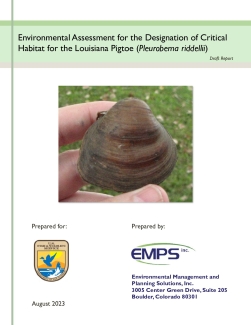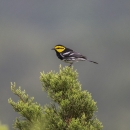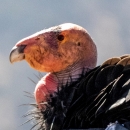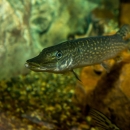
The purpose of this environmental assessment (EA) is to analyze the environmental consequences that may result from the designation of critical habitat for the Louisiana pigtoe (Pleurobema riddellii), a freshwater mussel. On March 20, 2023, the United States (U.S.) Department of the Interior (DOI), Fish and Wildlife Service (USFWS) published a proposed rule to list the Louisiana pigtoe as threatened under the Endangered Species Act of 1973 (ESA), as amended (USFWS 2023a). It is the USFWS’s position that, outside the jurisdiction of the U.S. Court of Appeals for the Tenth Circuit, USFWS does not need to prepare environmental analyses pursuant to the National Environmental Policy Act of 1969 (NEPA; 42 U.S. Code 4321 et seq.) in connection with designating critical habitat under the ESA. However, when the range of the species includes states within the Tenth Circuit, in this instance Oklahoma, under the Tenth Circuit ruling in Catron County Board of Commissioners v. U.S. Fish and Wildlife Service, 75 F.3d 1429 (10th Cir. 1996), the USFWS will undertake a NEPA analysis for critical habitat designation.
This EA will be used by the USFWS to decide whether critical habitat will be designated as proposed or if further refinements or analyses are needed. If the proposed action is selected as described, or with minimal changes, and no further environmental analyses are needed, a finding of no significant impact would be prepared. If significant impacts are found, or major changes are needed, an environmental impact statement would be prepared. This EA presents the purpose of and need for critical habitat designation, the proposed action, and an evaluation of the direct, indirect, and cumulative effects of the alternatives, pursuant to the NEPA, as implemented by the Council on Environmental Quality (CEQ) regulations (40 CFR 1500, et seq.) and according to DOI NEPA procedures (43 CFR 46).
| Attachment | Size |
|---|---|
| F-0499 LA Pigtoe EA_Final Draft_508_20230821.pdf5.63 MB | 5.63 MB |



